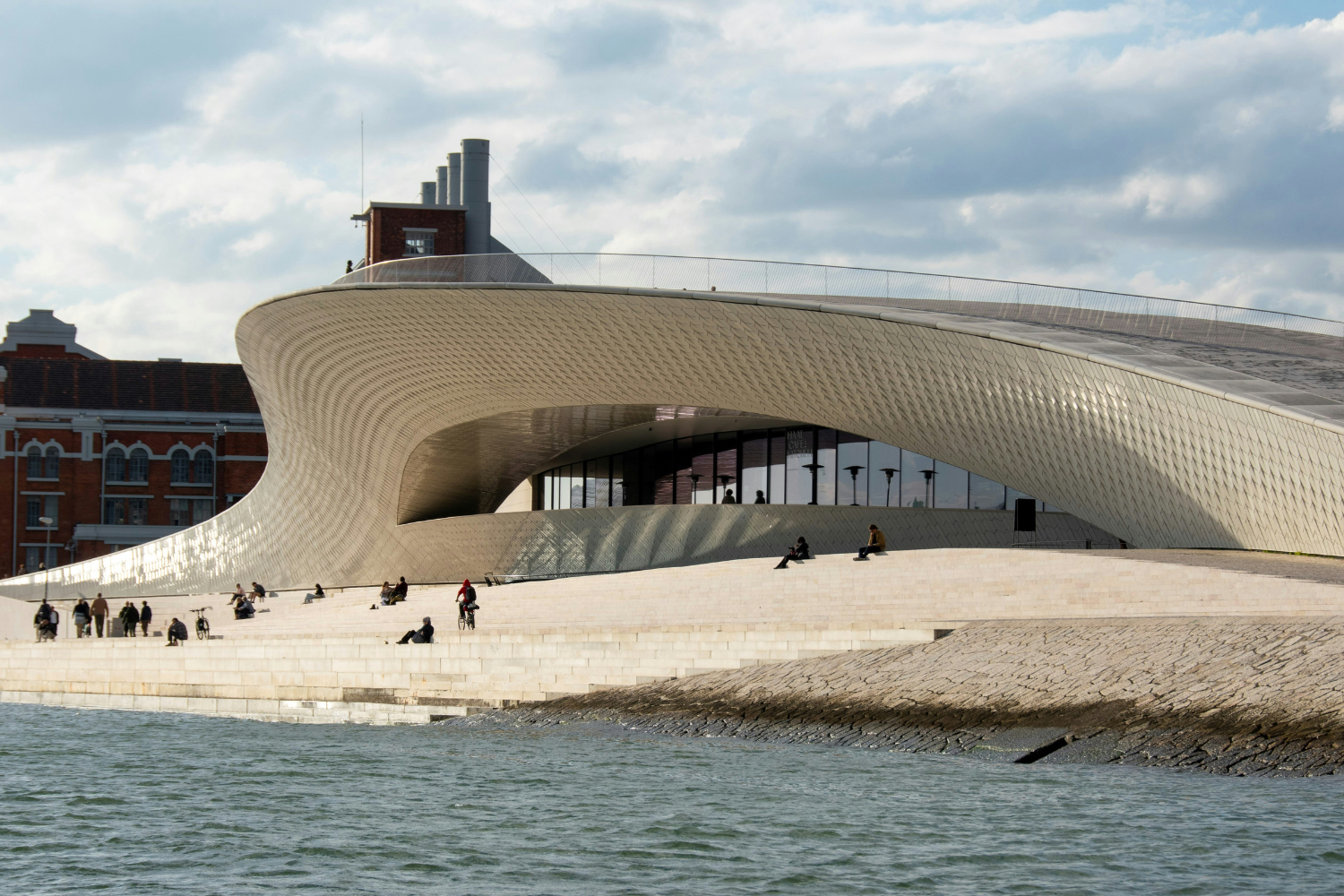- Home
- Articles
- Architectural Portfolio
- Architectral Presentation
- Inspirational Stories
- Architecture News
- Visualization
- BIM Industry
- Facade Design
- Parametric Design
- Career
- Landscape Architecture
- Construction
- Artificial Intelligence
- Sketching
- Design Softwares
- Diagrams
- Writing
- Architectural Tips
- Sustainability
- Courses
- Concept
- Technology
- History & Heritage
- Future of Architecture
- Guides & How-To
- Art & Culture
- Projects
- Interior Design
- Competitions
- Jobs
- Store
- Tools
- More
- Home
- Articles
- Architectural Portfolio
- Architectral Presentation
- Inspirational Stories
- Architecture News
- Visualization
- BIM Industry
- Facade Design
- Parametric Design
- Career
- Landscape Architecture
- Construction
- Artificial Intelligence
- Sketching
- Design Softwares
- Diagrams
- Writing
- Architectural Tips
- Sustainability
- Courses
- Concept
- Technology
- History & Heritage
- Future of Architecture
- Guides & How-To
- Art & Culture
- Projects
- Interior Design
- Competitions
- Jobs
- Store
- Tools
- More
The Rise of Parametric Architecture: Revolutionizing Modern Design and Construction

We’ve entered an era where technology and creativity intertwine seamlessly, transforming the way we design and experience spaces. Parametric architecture, driven by advanced computational tools, has emerged as a groundbreaking approach in the architectural world. This innovative method allows us to create complex, adaptive structures that respond to environmental factors, user needs, and aesthetic desires.
Gone are the days of rigid, one-size-fits-all designs. With parametric architecture, we can push the boundaries of traditional design, crafting buildings that are not only visually stunning but also highly functional and sustainable. As we delve deeper into this fascinating field, we’ll explore how parametric design is revolutionizing architecture and shaping the future of our built environment.

Table of Contents
ToggleThe Emergence of Parametric Architecture
Parametric architecture leverages advanced computational tools to create complex, adaptive structures. This method responds to environmental factors, user needs, and aesthetic desires, pushing the boundaries of traditional design.
Defining Parametric Architecture
Parametric architecture refers to a design approach where parameters and algorithms drive the form and function of a building. Designers use software to manipulate these parameters, enabling them to explore myriad design possibilities quickly. By adjusting input variables (e.g., material, climate data, user requirements), architects can generate unique outcomes that adapt to specific constraints.
Historical Context of Parametric Design
Parametric design has roots in the early 20th century but gained momentum with the advent of powerful computing in the late 20th century. Architects like Antoni Gaudí employed rudimentary parametric methods using physical models. However, the true evolution began with the development of advanced software like AutoCAD and Rhino in the 1990s. This era saw architects harnessing computational power, moving from manual drafting to digital experimentation. The shift enabled the exploration of more fluid, organic forms, leading architects like Zaha Hadid and Frank Gehry to pioneer parametric design in contemporary architecture.

Essentials of Parametric Architecture
Parametric architecture is transforming how we design buildings. By leveraging algorithms and computational tools, architects can create responsive and adaptable structures.
The Role of Algorithms
Algorithms define the core of parametric design. They help architects set and adjust parameters, which shape the final design. Algorithms, such as genetic algorithms and optimization algorithms, enable exploration of vast design possibilities. They also allow for real-time adjustments, helping architects respond to various constraints like structural integrity and environmental conditions.
Importance of Computational Tools
Computational tools are critical in parametric architecture. Software like Rhino and Grasshopper provide platforms for complex modeling and simulation. These tools enable the visualization of intricate designs and ensure accurate implementation. Additionally, they offer features like parametric modeling, scripting, and interoperability with other platforms, enhancing creativity and efficiency in architectural design.

Impacts of Parametric Architecture
Parametric architecture has significantly influenced the design and construction landscape, offering novel approaches and solutions. Here, we explore its profound effects on innovation, the environment, and the economy.
Innovations in Design and Construction
Parametric architecture has revolutionized design and construction through its algorithm-driven methodologies. Buildings such as the Beijing National Stadium and the Guggenheim Museum Bilbao employ these principles for unique, functional designs. Computational tools facilitate complex geometries, allowing efficient creation of previously unattainable forms.
Programmatic design impacts:
- Customization: Unique designs tailor to specific site conditions and client needs.
- Optimization: Enhanced structural efficiency and material usage.
- Automation: Streamlined production processes reduce human errors and increase precision.
Environmental and Economic Impacts
Parametric design has measurable environmental benefits by reducing waste and improving resource efficiency. When designers use algorithms to optimize material usage, they minimize construction waste and lower environmental footprints.
Sustainability initiatives include:
- Energy Efficiency: Optimized building orientation and facade design reduce energy consumption.
- Material Efficiency: Algorithm-driven material distribution minimizes excess use.
- Carbon Footprint: Reduced waste and efficient energy use lower greenhouse gas emissions.
Economically, parametric architecture delivers cost savings through reduced construction time and labor, and better resource management. The precision of computational designs decreases the need for costly modifications or corrections during construction.

Key economic benefits:
- Cost Reduction: Efficient designs reduce material and labor costs.
- Time Savings: Faster construction timelines increase overall project efficiency.
- Investment Returns: Innovatively designed buildings attract investors and increase property values.
In sum, parametric architecture is reshaping the design, construction, environmental, and economic landscapes.
Challenges and Criticisms
Parametric architecture, despite its numerous advantages, faces distinct challenges and criticisms. These factors influence its adoption and implementation in various projects worldwide.
Complexity in Execution
Implementing parametric designs involves intricate processes. The mathematical models and algorithms are sophisticated, requiring specialized training. Highly skilled architects and engineers are necessary to manage these systems, which limits workforce availability. The cost and time associated with learning and mastering these tools can deter firms from adopting parametric methods. Projects like the Heydar Aliyev Center by Zaha Hadid exemplify the expertise required for execution.
Technological Dependence
Parametric architecture relies heavily on advanced software and computational tools. Programs such as AutoCAD, Rhino, and Grasshopper are essential for creating and manipulating complex designs. Consistent updates and technological advancements necessitate ongoing investments in software and hardware. Any failure or limitation in these tools can lead to project delays. Some iconic buildings underscore the critical role technology plays, necessitating uninterrupted access to cutting-edge resources.
Future Trends in Parametric Architecture
The future of parametric architecture looks promising, with technological advancements and expanding applications in urban planning driving new possibilities. These trends are set to redefine how we approach construction and city development.

Advancements in Technology
Technological progress continually reshapes parametric architecture. Innovations in algorithms, computational software, and fabrication techniques contribute to more efficient design processes. For example, the integration of AI in software like Rhino and Grasshopper enables architects to simulate and optimize designs rapidly. Additionally, 3D printing and robotics enhance precision, reduce construction times, and minimize material waste. Advanced materials, such as smart composites and adaptive building skins, offer new ways to create sustainable, responsive structures.
Expanding Applications in Urban Planning
Parametric architecture’s role in urban planning is growing. Cities increasingly use parametric designs to develop efficient, livable spaces. For instance, parametric modeling helps planners analyze complex datasets, optimizing land use and transportation networks. Green infrastructure, such as urban parks and rain gardens, benefits from parametric techniques that maximize environmental performance. Moreover, modular construction methods derived from parametric principles enable rapid, scalable urban development, addressing housing shortages and promoting resilience against climate change.
Conclusion
Parametric architecture is no longer just a trend; it’s a foundational shift in how we approach design and construction. Leveraging advanced software, architects are pushing the boundaries of creativity and functionality. Pioneers like Zaha Hadid and Frank Gehry have set the stage for future innovations.
The environmental advantages are undeniable. Parametric design minimizes waste, optimizes resource usage, and incorporates sustainable materials. For instance, algorithm-driven methodologies help create buildings that adapt to their environments, reducing energy consumption.
Economic benefits are also significant. Reduced material costs, shorter construction times, and improved investment returns make parametric architecture an attractive option for developers. Iconic buildings designed through parametric methods are visually stunning and economically viable.
Technological advancements like AI, 3D printing, and robotics are further enhancing the field. These innovations improve precision, reduce construction times, and minimize material waste, making parametric architecture more efficient and sustainable.
Urban planning is also seeing transformative impacts. Cities are adopting parametric designs to create efficient, livable spaces while addressing housing shortages and climate change challenges. Modular construction and green infrastructure are integral to these new designs, providing scalable and eco-friendly solutions.
Parametric architecture is reshaping our approach to building design and construction. As technology continues to evolve, we can expect even more groundbreaking developments in this dynamic field.
- adaptive design
- advanced design techniques
- algorithmic architecture
- Architectural Innovation
- architecture technology trends
- Architecture Trends
- computational design
- construction revolution
- digital architecture
- digital construction revolution
- Future of Architecture
- Modern Design
- modern design innovation
- Parametric Architecture
- sustainable architecture
Trained as an architect and seasoned in the editorial trenches, I turn raw design concepts into compelling narratives that resonate beyond studio walls. My work spans in-depth project spotlights, interviews with visionary designers, and analysis pieces that distill complex technical data into accessible insights. Whether polishing copy for publication or generating original features, I draw on years of practice to ensure every sentence captures architecture’s rigor, poetry, and cultural impact—inviting professionals and enthusiasts alike to see the built environment through a sharper, more inspired lens.
Submit your architectural projects
Follow these steps for submission your project. Submission FormLatest Posts
Top 10 Examples of Parametric Architecture Around the World
Parametric architecture is reshaping global design through computational tools that generate fluid...
10 Notable Architects Who Excel in Parametric Design
Discover 10 leading architects who excel in parametric design, showcasing how computation,...
Parametric Design in Bridge Architecture: From Idea to Ribbon-Cut
Parametric design in bridge architecture: how data, rules, and optimization speed iterations,...
8 Principles of Parametric Architecture You Should Know
Parametric architecture merges computational logic with creative exploration, allowing designers to generate...












Leave a comment